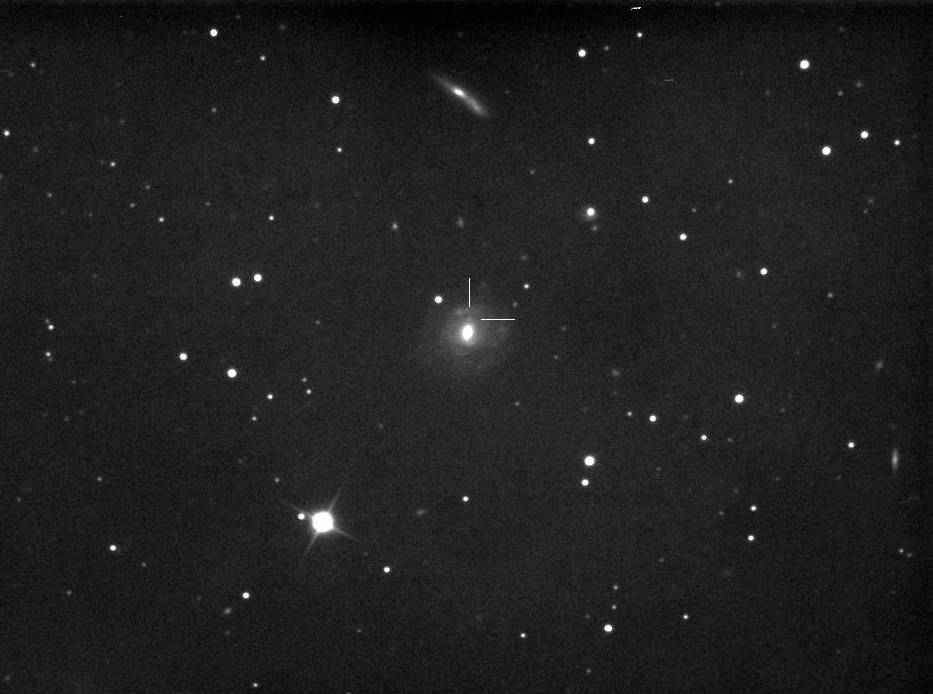SN2015ag (SN J00422186+2938415) discovered by Paolo Campaner on behalf of Italian Supernovae Search Project.
, CBAT TOCP discovered 2015/08/06.092 by Paolo Campaner (ISSP)
Found in IC 43 at R.A. = 00h42m21s.86, Decl. = +29°38'41".5
Located 1" west and 12" north of the center of IC 43.
See attached image and clasification ATEL.

Asiago spectroscopic classification of two supernovae
ATel #7902; G. Terreran, S. Benetti, E. Cappellaro, N. Elias-Rosa, P. Ochner, A. Pastorello, L. Tartaglia, L. Tomasella, M. Turatto (INAF OAPd)
on 11 Aug 2015; 09:52 UT
Credential Certification: Lina Tomasella (
Questo indirizzo e-mail è protetto dallo spam bot. Abilita Javascript per vederlo.
)
Subjects: Optical, Supernovae
The Asiago Transient Classification Program (Tomasella et al. 2014, AN, 335, 841) reports the spectroscopic classification of PSN J19273770+5422340 in the galaxy NGC 6801 and PSN J00422186+2938415 in the galaxy IC 43, both discovered by Paolo Campaner (ISSP). Informations on these transients are also available from the "Bright Supernova" website (http://www.rochesterastronomy.org/snimages/), The ATel, and the CBAT Transient Object Followup Reports (http://www.cbat.eps.harvard.edu/index.html). The observations were performed with the Asiago 1.82 m Copernico Telescope (+AFOSC; range 340-820 nm; resolution 1.4 nm).
Name | Discovery | z | Type | Phase | Notes PSN J19273770+5422340 | 2015-08-09.024 | 0.0145 | II | +10d | (1) PSN J00422186+2938415 | 2015-08-06.092 | 0.0162 | Ic | +2-3 months| (2)
(1) Best match with normal Type-II SNe around 10 days after maximum light, adopting a redshift z=0.014547 (Springob et al. 2005, ApJS, 160, 149) for the host galaxy NGC 6801. A narrow Halpha component, superposed on the broad Halpha attributed to the SN, probably arises from an H II region close to the location of the SN. The expansion velocity of the ejected material, as inferred from the position of the broad absorption of Halpha, is about 9000 km/s.
(2) The redshift of the host galaxy (IC 43) is from Huchra et al. 1999, ApJS, 121, 287.
Classifications were done with GELATO (Harutyunyan et al. 2008, A&A, 488, 383) and SNID (Blondin and Tonry 2007, ApJ, 666, 1024). The Asiago classification spectra are posted at the website http://sngroup.oapd.inaf.it.




